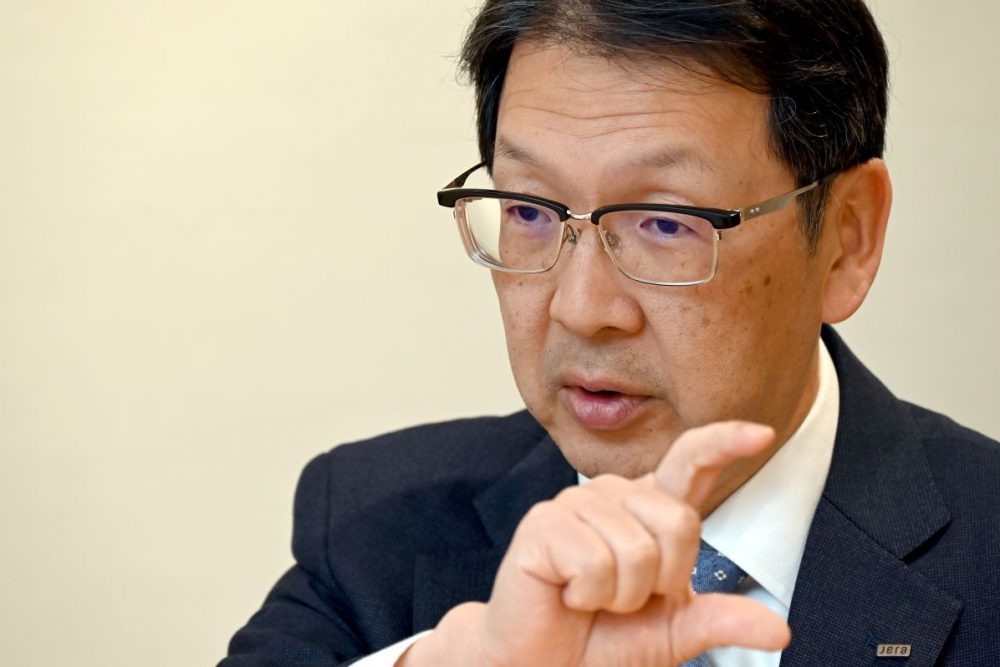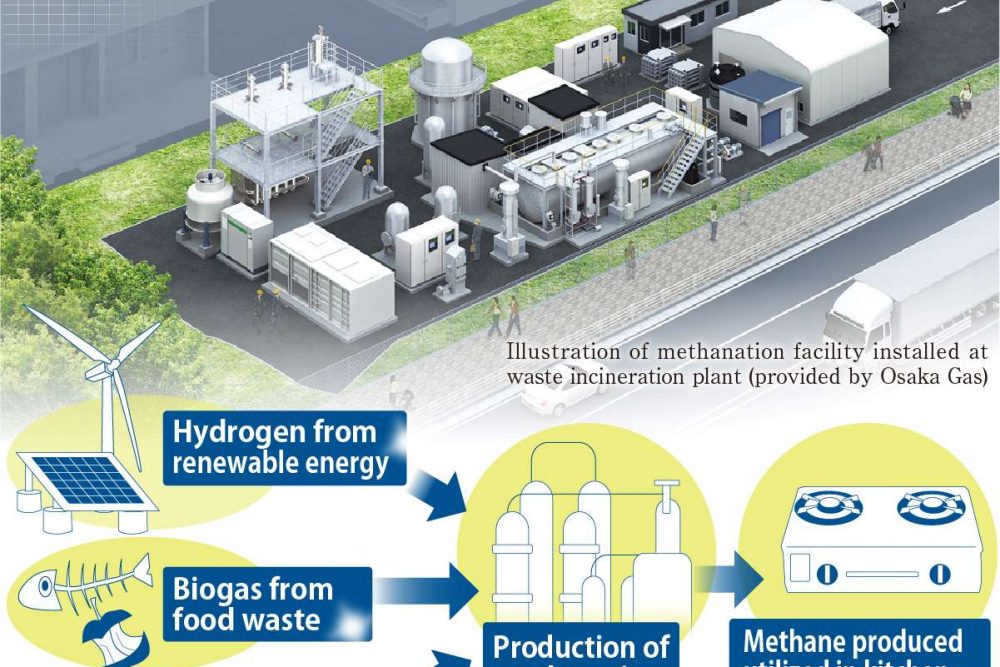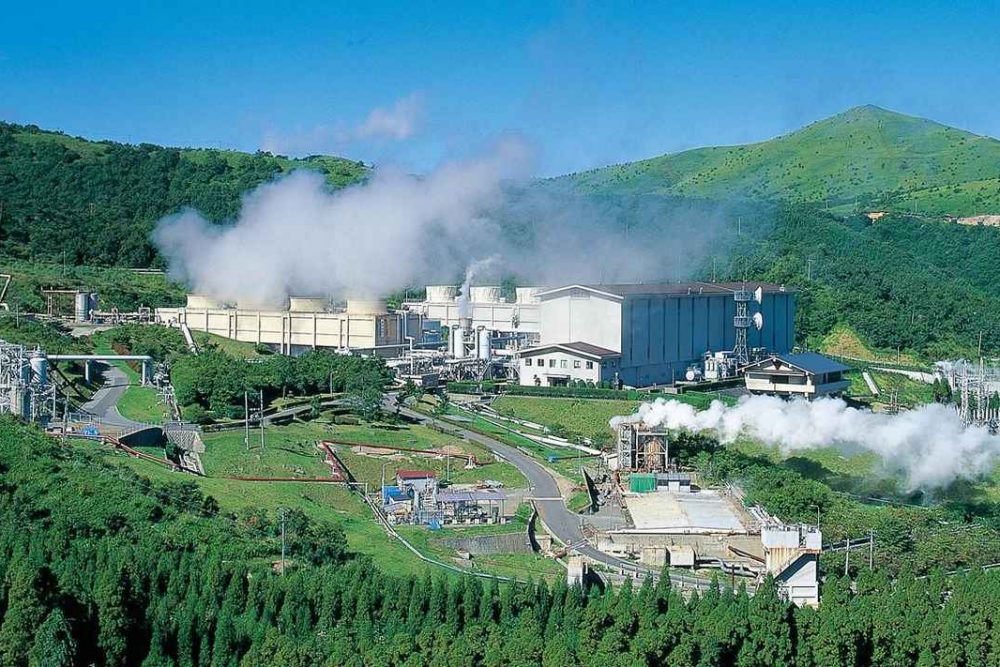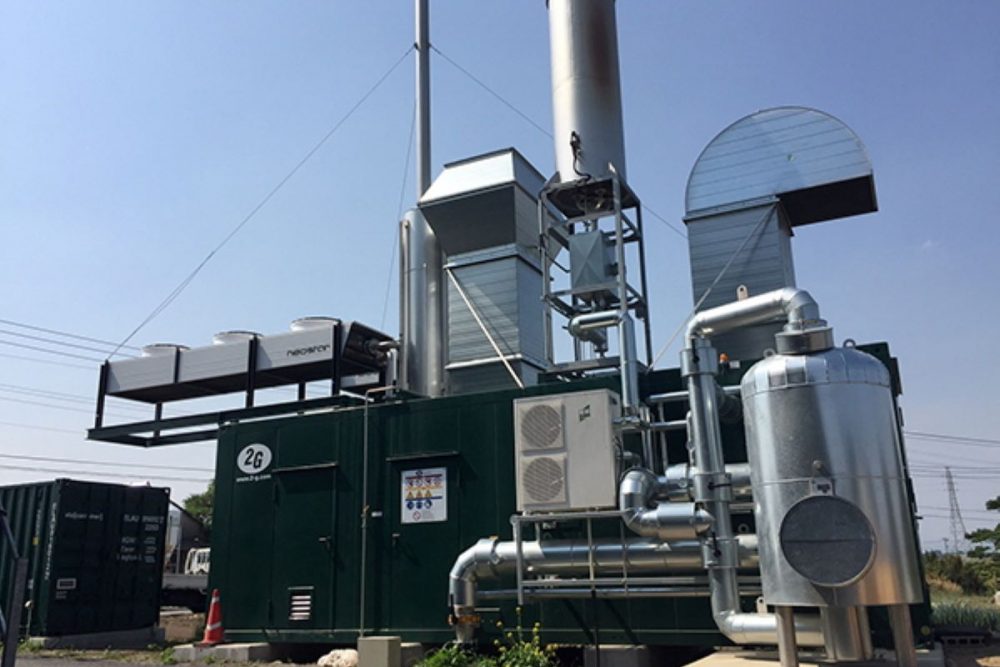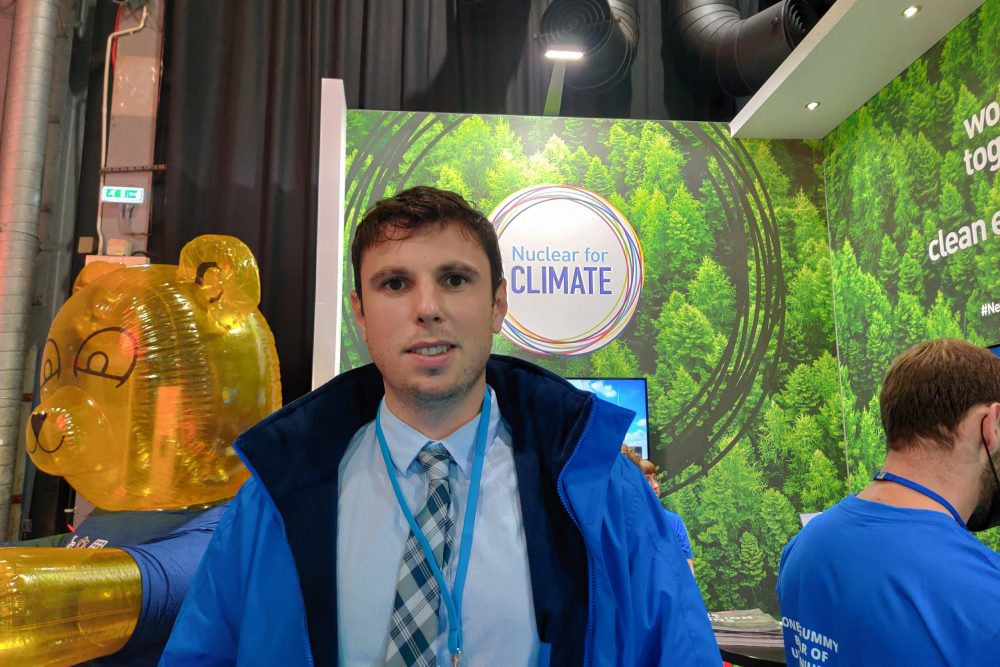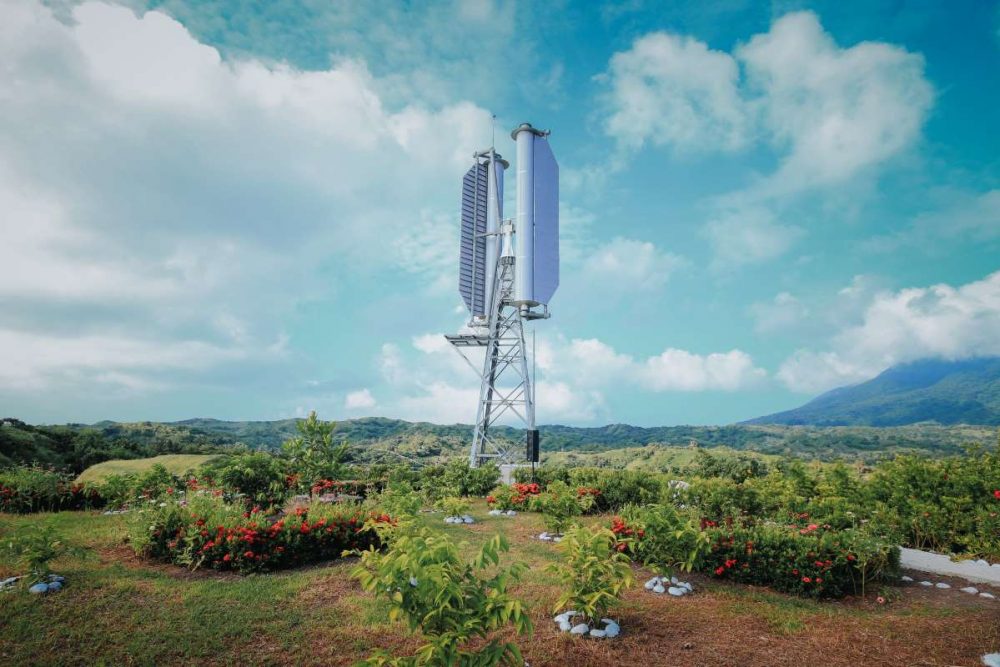In the Face of Opposition, Wind Power Moves Offshore
In response to citizens' concerns over onshore wind farm development, Japan is actively promoting offshore wind power, with several projects underway.
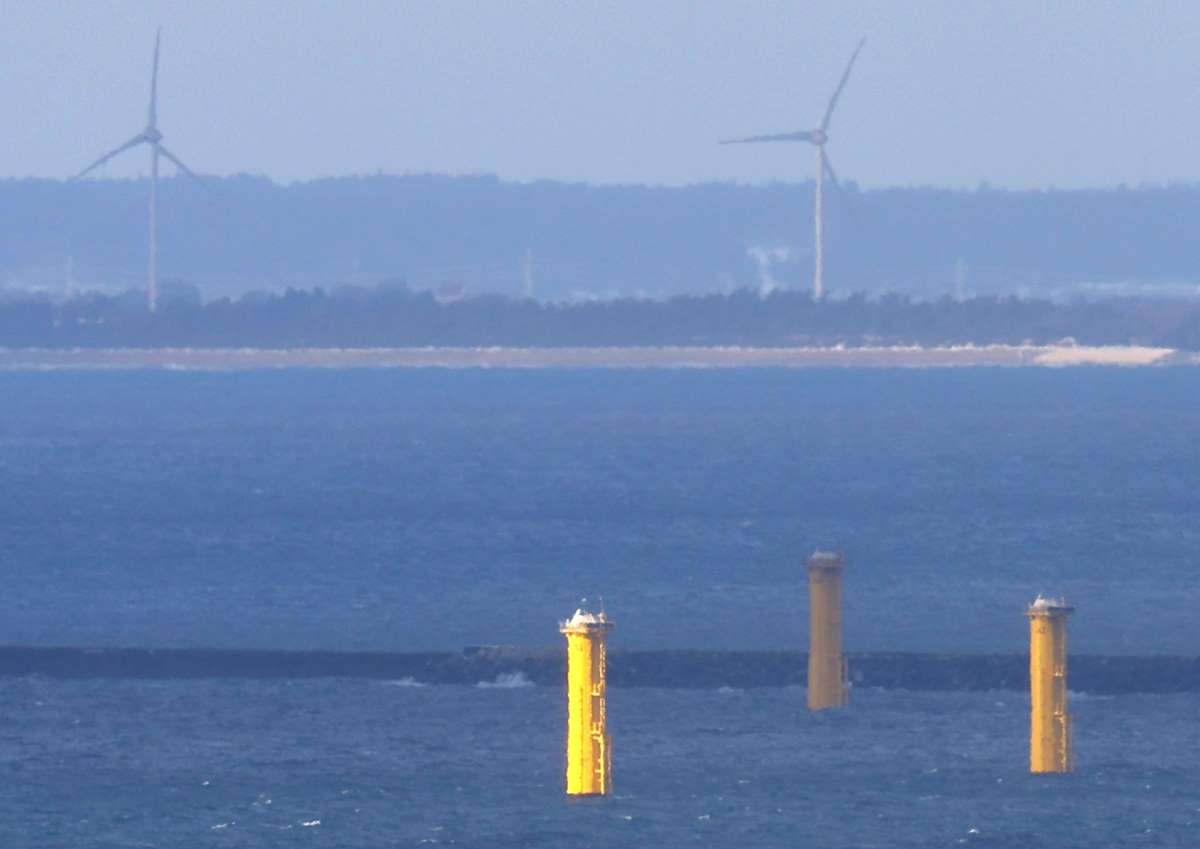
このページを 日本語 で読む
A shift from onshore to offshore is underway in the location of wind power farms across the country. In late 2022, commercial operation began at Japan’s first large-scale offshore wind power plant in Akita Prefecture.
The government is promoting offshore wind power as a key to the spread of renewable energy.
This shift unfolds against the backdrop of onshore wind power becoming increasingly large-scale and more concentrated in the Tohoku and Hokkaido regions. As such, it is becoming more difficult to build consensus with local residents in each region.
Promoting Offshore Wind Power
The governor of Niigata Prefecture, Hideyo Hanazumi, made the following comment in October 2022.
"Our efforts to request prompt designation of promotional areas have been welcomed. We will work to introduce offshore wind power generation in harmony with the fishing industry and local communities."
At the time, the Ministry of Economy, Trade and Industry (METI) and the Ministry of Land, Infrastructure, Transport and Tourism (MLIT) designated promotional areas for offshore wind power development in waters off the coasts of Murakami and Tainai cities in the prefecture.
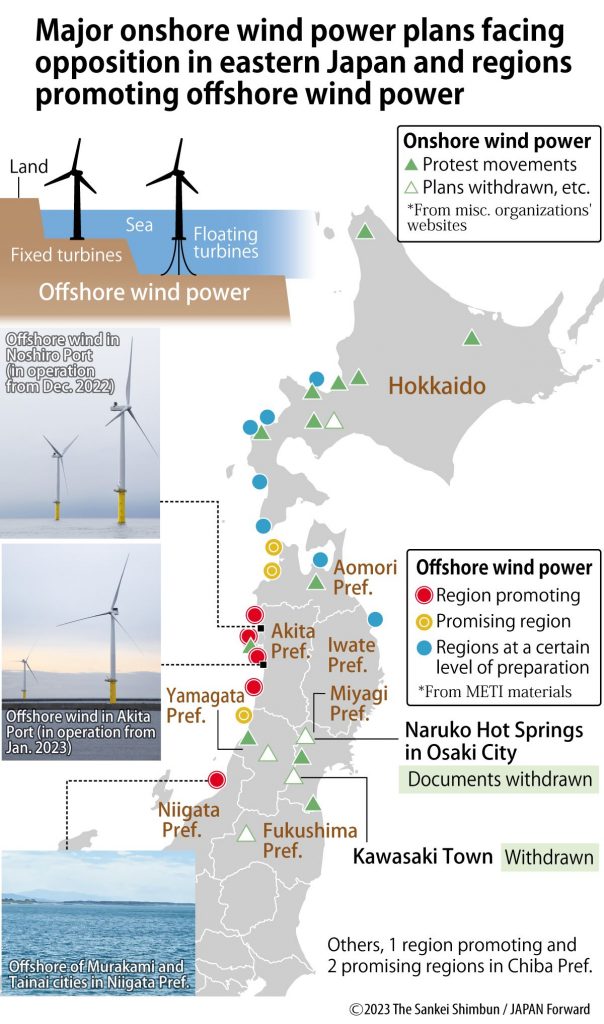
Plans are based on the Act on Promoting the Utilization of Sea Areas for the Development of Marine Renewable Energy Power Generation Facilities.
In December 2022, the two ministries put out a public call for tenders to operate in the designated sea area. The selected operator will be allowed to operate a power generation business in the area for up to 30 years. The deadline is the end of June 2023, and the operator is expected to be selected in March of 2024.
Akita Prefecture, also along the Sea of Japan, has a head start. The Akita Offshore Wind Corporation, which includes investors such as Marubeni and Tohoku Electric Power, recently began operating 33 offshore wind turbines.
Farms were opened at Noshiro Port in Noshiro City in December 2022 and at Akita Port in Akita City in January 2023. Four new areas in Akita have been designated as promotional areas. Construction is planned to commence for two of these in 2026. As in Niigata, the remaining areas are open for bidding.
Issues with Onshore Wind Power
Solar, wind, and other renewable energies expanded rapidly with the start of feed-in tariffs (FIT) in the year following the 2011 Great East Japan Earthquake. March 2023 marked 12 years since the disaster and the TEPCO Fukushima Daiichi nuclear power plant accident.
In 2020, former Prime Minister Suga declared that the country would achieve net zero greenhouse gas emissions by 2050. The government also announced that renewable energies would become the main source of power.
Amid this trend, onshore wind power projects are becoming increasingly large-scale. Projects are also more concentrated in certain areas. This is due to the suitable geographical features of some areas for wind power generation, such as the mountains of Tohoku and the coast of Hokkaido.
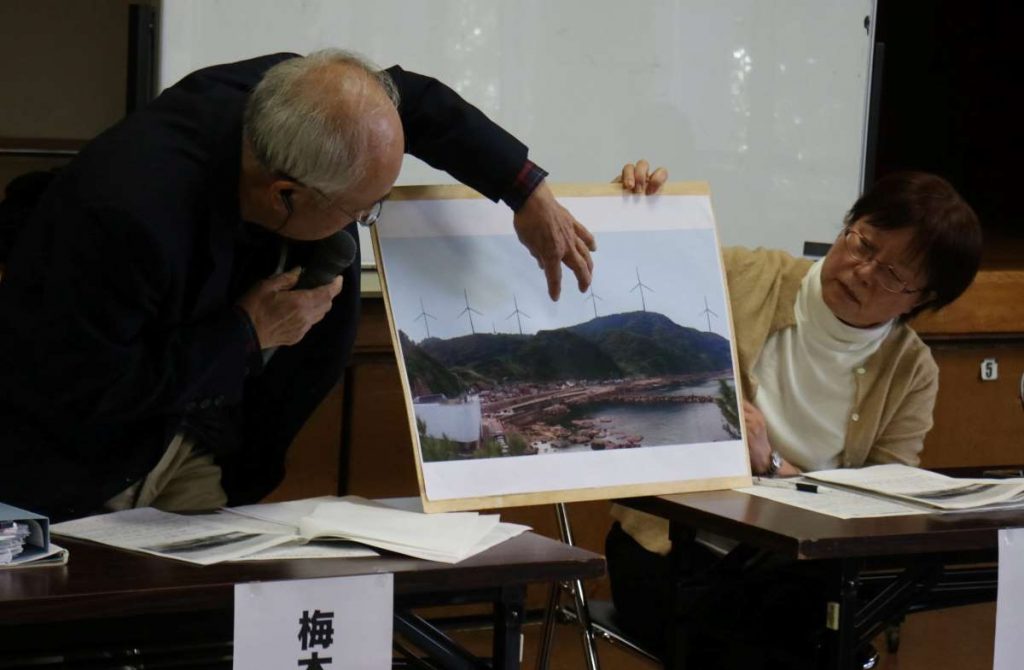
"Citizens' concerns and anxieties over the destruction of the landscape and nature, negative impacts on rare birds, health hazards from noise and infrasound, and the risk of landslides, are undeniable,” says Kunio Sasaki, 55. Sasaki is the co-chair of a national alliance of citizen groups that studies the impact of wind power generation on surrounding nature.
Protecting Forests with New Taxes
In June 2022, the governors of Miyagi, Yamagata, and Aomori, three of the six prefectures in the Tohoku region, expressed concern over a series of large-scale wind power projects.
In response to opposition from local residents, Governor Yoshihiro Murai declared his opposition to a Kansai Electric Power project in the Zao mountains in Kawasaki Town, Miyagi Prefecture. The following month, the plan was withdrawn.
In January of 2023, a project in the Naruko Onsen area of Osaki City in the same prefecture faced opposition from residents and the mayor. The project operator withdrew documents at the third stage of the environmental impact assessment.
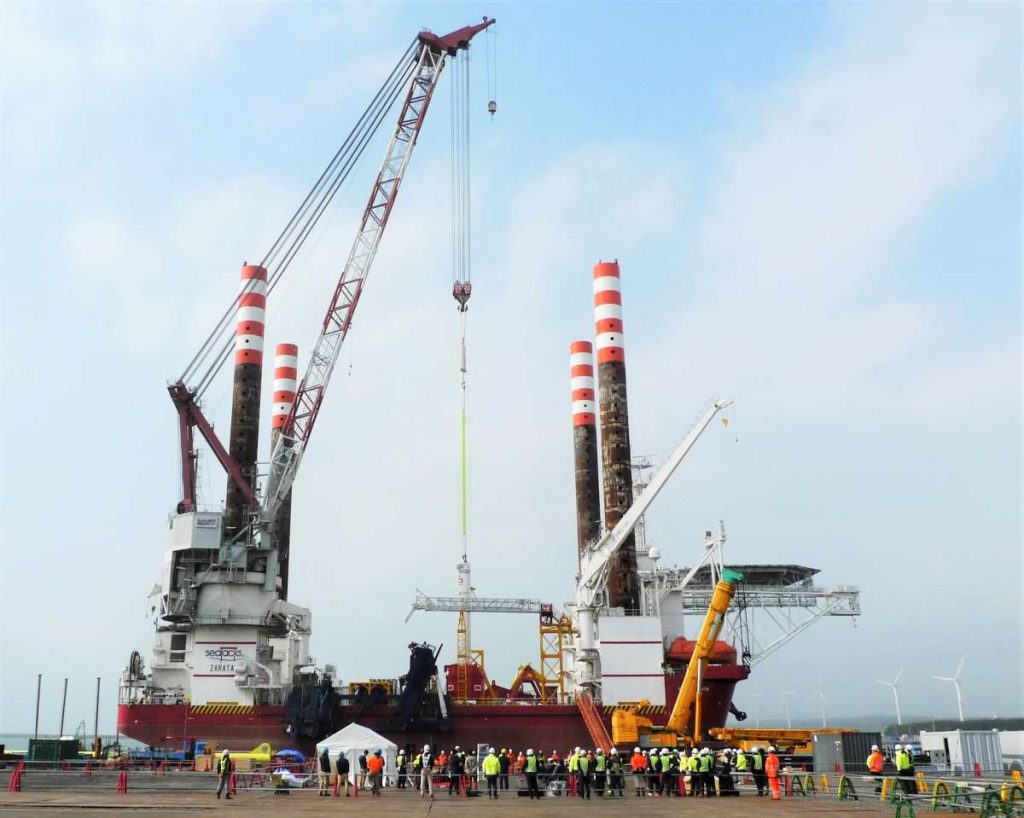
Governor Murai pointed out the inconsistency at work in the development of renewable energy in mountainous areas. "By cutting down trees grown by those that came before us, we are reducing carbon sinks," he said.
Now the prefecture aims to introduce a new tax on businesses that develop forests to produce renewable energy.
Plans are to set the tax at 20 to 30% of operating profits from solar, wind, and biomass power generation. It is intended to encourage businesses to develop renewable energy projects outside of forests, protecting forests from large-scale development. If introduced, the new tax will be the first of its kind in Japan.
Turbines Along the Coast
National policy has also shifted to the promotion of offshore wind power. Offshore, the wind is more stable than on land, and noise and landscape issues are less likely to occur.
The government has set a goal of increasing offshore wind power capacity from roughly 20,000 kW in 2020 to a maximum of 45 million kW by 2040. This is equivalent to about 45 nuclear reactors. It represents considerably more capacity than the country's existing 33 reactors, excluding those that are set to be decommissioned.
On the other hand, topographical conditions in Japan present some challenges. Offshore turbines are mostly of the "fixed" type, where the foundation is fixed to the seabed.
In Europe, the water depth is generally shallow for a considerable distance from the coast, allowing a distance of more than 10 kilometers from the shore to the turbines.
In contrast, the waters around Japan are deep. So turbines must be placed in shallow waters nearer to the coast. This has raised concerns about impacts on the landscape and health hazards from noise and low-frequency sound.
Futuristically, "floating" offshore turbines are a promising option. But all five of the designated promotional areas in Akita and Niigata Prefectures, where development will soon commence, are considering the use of fixed turbines.
このページを 日本語 で読む






